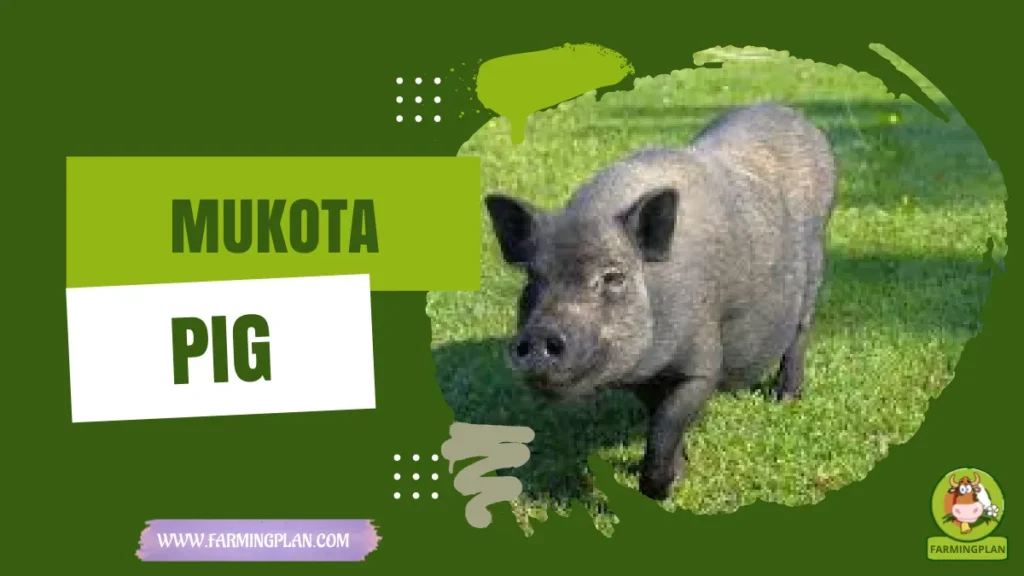If you’ve ever raised Suffolk sheep, you already know they’re in a league of their own. These bold, black-faced beauties are one of the most popular British breeds in the sheep world and for good reason. When I first started raising them, I was impressed by their rapid growth, strong maternal instincts, and how effortlessly they turned grass into lean muscle. As a farming specialist, I’ve worked with numerous sheep breeds, but Suffolk sheep always stand out for their meat quality, friendly nature, and low-maintenance needs. In this guide, I’ll walk you through everything I’ve learned over the years—from where they came from to how to care for them like a pro.
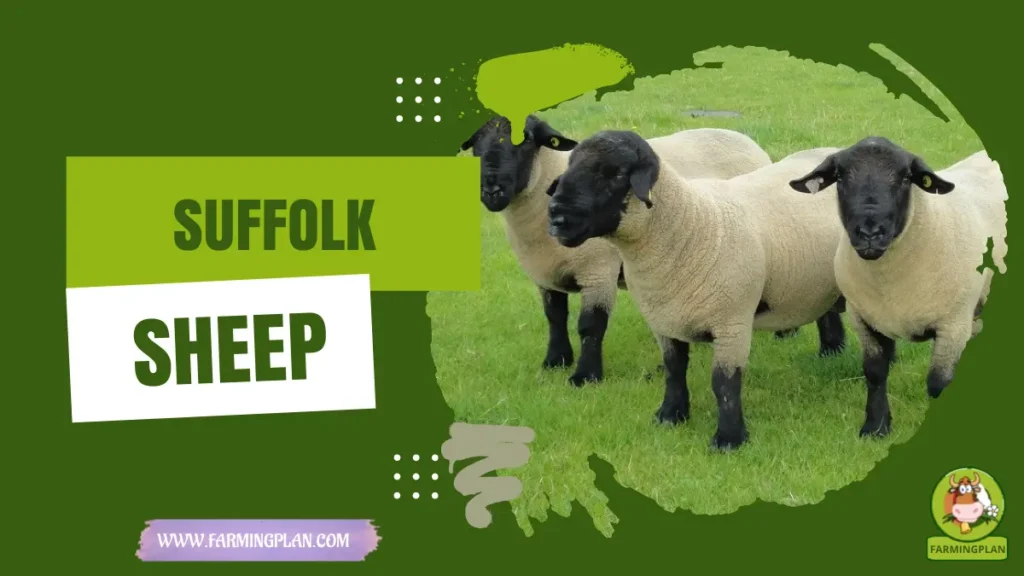
History & Origin of the Suffolk sheep
Let me take you back to 18th-century England, where it all began. The Suffolk sheep breed was developed on the southeastern coast by crossing Norfolk Horned ewes with Southdown rams. These farmers weren’t messing around—they wanted a hardy breed that could handle the elements while packing on weight like a prizefighter. And it worked.
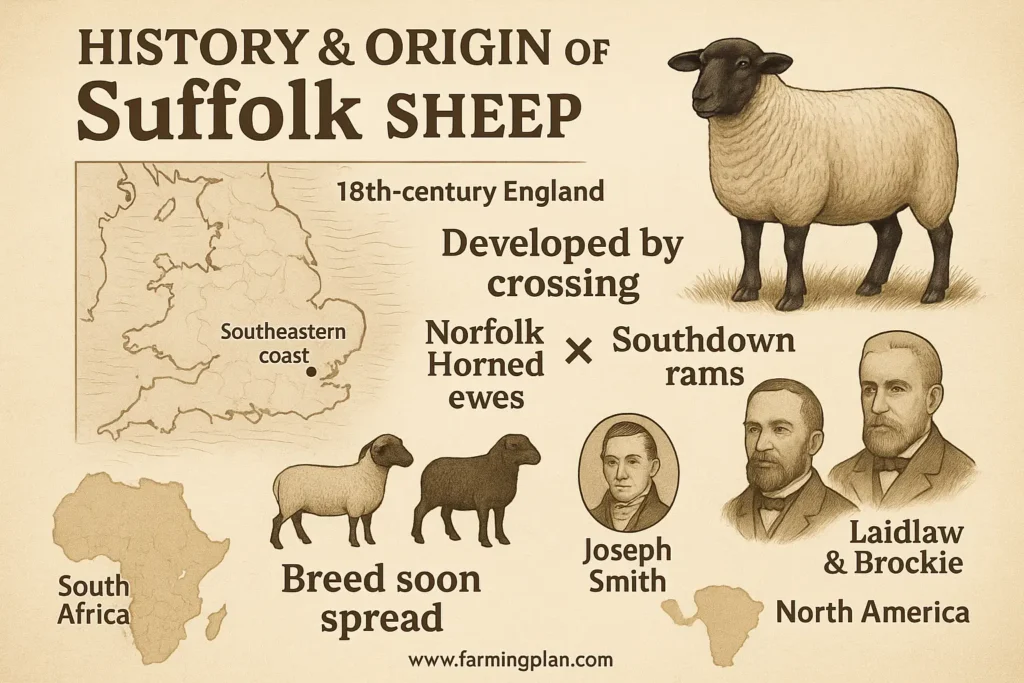
Breeders like Joseph Smith and the duo Laidlaw and Brockie played a huge role in perfecting what would become one of the most recognized British breeds. Their goal? A sheep with superior muscling, better conversion of muscle to meat, and a body built for commercial markets. The breed soon spread to upland regions and eventually made its way to places like South Africa and North America. Today, thanks to societies like the United Suffolk Sheep Association, this distinct breed continues to evolve with modern farming.
Characteristics of the Suffolk sheep
One look at a Suffolk and you’ll know it’s not your average sheep. They’ve got this confident stance with broad shoulders, massive bodies, and no horns in sight. The face and legs are jet-black, making them stand out even more in a pasture full of fluff. Their strong skeletal muscles give them a solid frame, ideal for meat production.
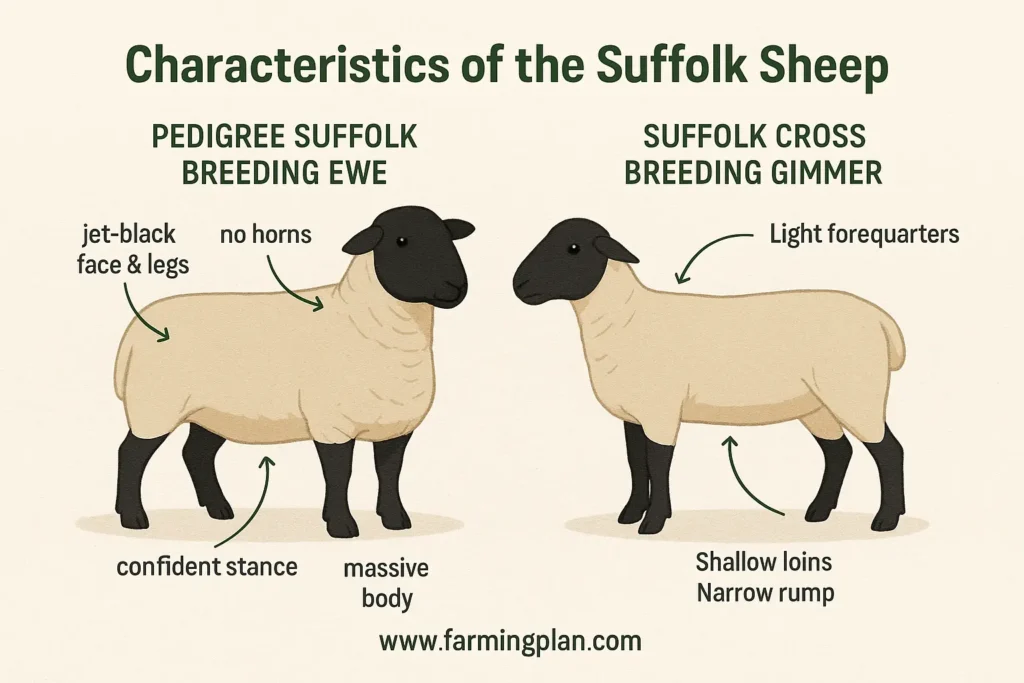
Now, not all Suffolks are identical. Pedigree Suffolk Breeding Ewes usually have well-balanced frames and stronger maternal traits, while Suffolk Cross Breeding Gimmers tend to be a bit more variable in appearance depending on the cross. But the key features stay the same—light forequarters, shallow loins, narrow rumps, and occasionally post legs or cow hocks if not selected carefully. That’s where careful breeding makes all the difference.
Read More: Assaf Sheep: How To Start Profitable Farming
Nature & Temperament of the Suffolk sheep
Suffolk sheep may look tough, but they’re actually pretty chill. I’ve always found them to be calm, sociable, and pretty easy-going—whether I’m walking through the field or checking on them during lambing season. Unlike some other breeds with more “wild nature,” Suffolks tend to stick close and respond well to consistent handling.
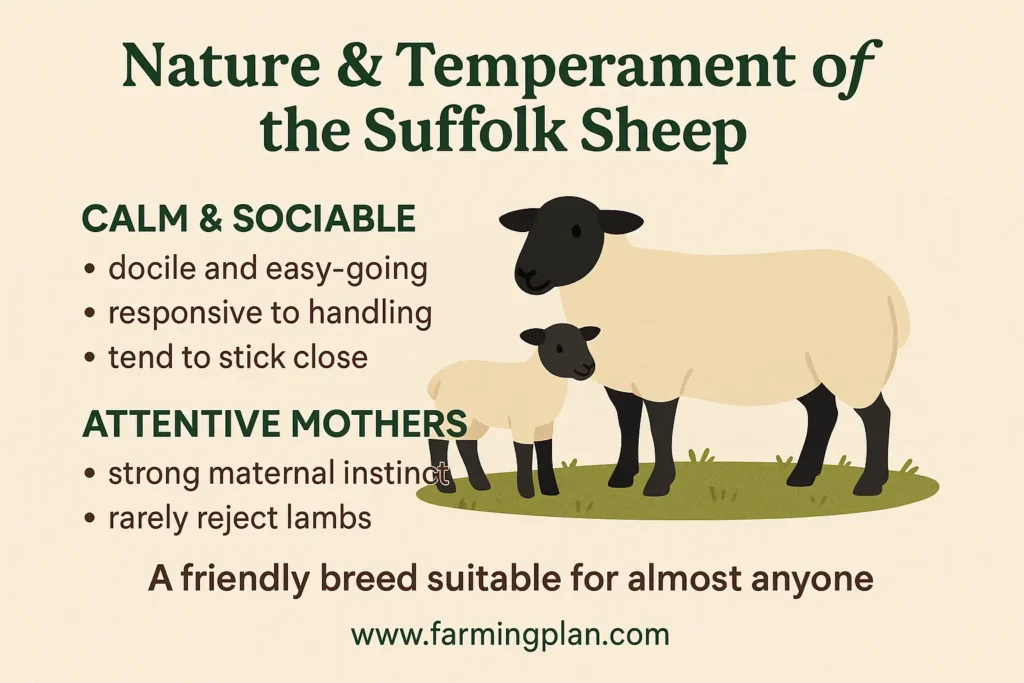
Their maternal instinct is impressive, too. Suffolk ewes are attentive moms and rarely reject lambs, which is a huge win for any farmer or breeder. Whether you’re running a small hobby farm or a larger commercial operation, their friendly nature makes them a great fit for almost anyone.
Read More: Southdown Sheep: Smallest British Breed
Food & Diet of the Suffolk sheep
Feeding Suffolks isn’t complicated, but you do need to get it right if you want those muscular bodies to develop properly. I stick to high-quality hay, clean water, and a balanced grain mix, especially during the colder months. During lambing and breeding seasons, I make sure they get extra protein and minerals.
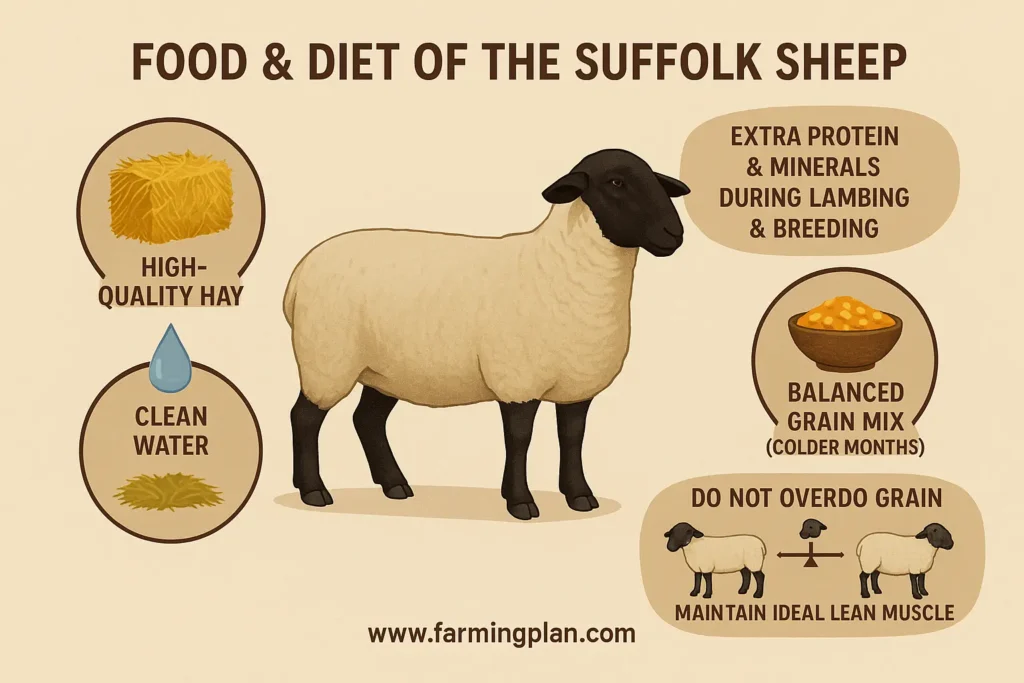
Now, here’s a quick tip—don’t overdo the grain. Too much can lead to health issues like bloating. Keep it balanced and always check the condition of the sheep. If their ribs are sticking out, they need more. If they look like they’ve been hitting the donut shop, cut back. It’s all about maintaining that ideal lean muscle.
Usage & Purpose
Suffolk sheep are the go-to meat breed for a reason. They grow fast, yield high-quality carcasses, and meet the market standards for prime lamb. When I take them to the auction, they stand out—buyers know they’re getting consistent, well-muscled market lambs.
They also shine in breeding programs. Careful breeding produces prize breeding animals with improved traits over time. And thanks to their superior muscling and adaptability, they’re often used in crossbreeding to enhance other flocks. If you’re in this for show, sales, or just boosting your farm’s bottom line, Suffolks are a solid investment.
Special Features
What really makes Suffolk sheep special? Well, let’s start with their powerful muscle-to-meat conversion. They build skeletal and triceps muscle efficiently, which means better meat quality without excessive fat. That’s gold in today’s market.
They’re also super hardy. I’ve had flocks grazing in both lowland and upland conditions, and these sheep just keep going. Their adaptability to different climates, combined with their distinct black fibers and fast growth, makes them one of the
Read More: Arabi Sheep: How To Start Your Farm
Health Issues & Prevention
Even though they’re a hardy breed, Suffolks can still face a few health hiccups. The most common issues I’ve seen include post legs, cow hocks, and occasionally, something called lamb syndrome. It’s a condition affecting young lambs that can cause muscle weakness or poor growth if not caught early.
Then there are neurologic issues—sometimes linked to ocular disease or vestibular disease—which can mess with their balance or movement. I always keep an eye out for odd behavior like head tilting or stumbling. Routine checkups, proper nutrition, and vaccinations help prevent most problems. And remember, always inspect new animals before bringing them into your flock.
“Smart Breeding And Daily Care Make Suffolk Sheep The Powerhouse Of Your Farm.”
Step-by-Step Farming Guide – How I Raise Suffolk Sheep
Step 1: Set Up The Right Environment
Start with strong fencing and simple shelters. I recommend sturdy woven wire fencing with electrified lines if predators are an issue. Provide enough space—at least 15–20 square feet per adult sheep in housing and a few acres of pasture for grazing.
Shelters should be dry, draft-free, and easy to clean. Even though Suffolk sheep are hardy, they still appreciate a cozy space during heavy rain or snow.
Step 2: Choose Healthy Stock
Always buy from reputable breeders. Look for animals with good body condition, clean eyes and nose, strong legs, and no signs of cow hocks or post legs. Ask about the animal’s genetics and past health records.
I also avoid any with shallow loins or narrow rumps since those traits can affect meat yield and breeding performance down the line.
Step 3: Feed Them Right
Feeding isn’t just about stuffing hay in front of them. I provide a mix of pasture grazing, hay, and grains (especially during cold months or lambing season). Make sure they have free access to salt blocks and clean water.
Supplements like selenium or copper may be needed depending on your soil type—get your pasture tested to be sure.
Step 4: Monitor Their Health
Check your flock daily. I walk through my pasture every morning with a coffee in hand, watching for limping, odd behavior, or weight loss. Regular hoof trimming is a must, along with vaccines and deworming based on your region.
Keep records for each individual animal. If one shows symptoms of neurologic disease or odd gait, call the vet early.
Step 5: Plan Breeding & Lambing Carefully
Suffolk sheep are known for strong maternal instinct, but planning is still key. I pair ewes and rams after heat cycles and use marking harnesses to track mating dates. Most lambing happens in early spring, and I keep a clean, quiet space ready.
Watch closely as lambing nears. Most ewes deliver on their own, but I’ve helped a few tricky births—it’s just part of the job.
Expert Tips & Best Practices
- Rotate pastures every 2–3 weeks to prevent parasites.
- Keep records of each lamb crop to improve future breeding.
- Cull sheep with persistent leg issues like sickle hocks or cow hocks.
- Join your local breed society or the United Suffolk Sheep Association.
- Tip: “A Suffolk with strong legs, lean muscle, and calm temperament is every farmer’s dream.”
FAQ
What is the Suffolk sheep breed known for?
Suffolk sheep are famous for their superior meat quality, fast growth, and muscular bodies, making them a top choice for commercial farmers.
Are Suffolk sheep good for beginners?
Yes, their calm nature, hardiness, and minimal grooming needs make them ideal for both beginners and seasoned farmers.
How do I know if a Suffolk sheep is healthy?
Check for clear eyes, solid stance, no limping, and smooth movement. Good appetite and alert behavior are also great signs.
Can Suffolk sheep be raised in cold climates?
Absolutely. They adapt well to various climates as long as they have shelter, proper nutrition, and dry ground.
Do Suffolk sheep produce wool?
They do, but their wool is of lower commercial value. They’re primarily raised for meat due to their lean muscle mass.
Conclusion
Suffolk sheep aren’t just another breed—they’re the backbone of many successful meat sheep operations, including mine. With their rich British history, easy-going temperament, strong maternal instincts, and unbeatable muscle quality, they check all the boxes for farmers, breeders, and hobbyists. If you’re ready to raise a sheep that grows fast, stays healthy, and stands out in the market, then the Suffolk is your go-to. Trust me—once you start working with them, you’ll never look back.

